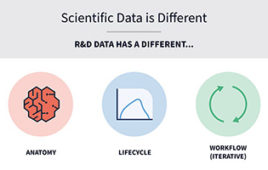Feature: Farming carbon

levels of soil carbon.
Image: Sveta/iStockphoto
On 1 July this year NCOS came into effect. [1]
It is designed to give Australian businesses, particularly farm
businesses, opportunities to develop offset credits for voluntary carbon
markets. Emissions from revegetation, forest management, and cropland
and grazing land management – while not currently counted towards
Australia’s obligations under the Kyoto Protocol target – are eligible
for the generation of carbon offset credits under NCOS.
The inclusion of offsets from increased soil carbon
through farmland management has stirred a lot of interest. In brief, if
farmers adopt land management strategies that sequester carbon from the
atmosphere into their soils, they will be eligible to receive carbon
credits that can be sold to organisations aiming to offset their
greenhouse gas emissions. A company with high emissions, for example,
could pay farmers for their credits and thus promote themselves as
carbon neutral.
On paper, it’s a win-win situation. Healthy,
fertile, productive soils depend on good levels of soil carbon. In
Australia, soil carbon has been alarmingly depleted since the spread of
wide-scale agriculture after European settlement. Over the past decade,
there has been a fast-growing awareness that Australia’s farming
practices need to change if the country’s severely degraded soils are to
continue to support the production – and deliver the increases in
productivity – that farmers have come to expect.
‘On average, it’s safe to say there have been 30 to
70 per cent losses of soil carbon under cultivation compared with the
native, uncultivated conditions,’ says Jonathan Sanderman, a soil
organic matter biogeochemist in CSIRO’s Carbon and Nutrient Cycling
Research group (Sustainable Agriculture Flagship).
However, several hurdles need to be cleared if
Australian farmers are to become carbon traders. First, there is no
well-established, cost-effective method of accurately measuring and
monitoring soil carbon. Second, while NCOS offers guidelines for
voluntary trading, there is no guarantee that the scheme will take off.
And third, scientists still don’t have a very good idea of how
effectively the various ‘carbon-friendly’ management strategies actually
increase soil carbon.
Regarding the first problem, accurately monitoring changes in soil carbon is currently prohibitively expensive.
‘If the cost of monitoring is greater than what
you’re paid for the carbon – which it pretty well is at the moment – the
system’s not going to work,’ says research scientist Elizabeth Schmidt
at CSIRO Land and Water.
One way to keep costs down is to award carbon
credits based on carbon modelling according to land use and soil type,
rather than through actual measurements. For example, modelling might
predict that zero-till, direct-drilling crop management in a particular
region will sequester a certain mass of carbon per hectare per year.
Provided that farmers stick to that type of land use, they can claim
carbon credits, with compliance monitored through an auditing system.
Central to the third problem – the question of
effectiveness – is the issue of ensuring that sequestering soil carbon
is indeed a good way to mitigate or reduce greenhouse gas emissions.
Ultimately, this will depend on how policy dictates that farmers who
plan to trade carbon use their land. Dr Sanderman notes that there are a
number of approaches that, although they will increase the amount of
carbon sequestered, will also increase emissions –which farmers don’t
need to account for in the current iteration of Australia’s voluntary
market.
‘For example, if you converted crop land to pasture,
you’d increase the amount of carbon in the soil,’ says Dr Schmidt. ‘But
as soon as you start grazing it, the sheep start producing methane, and
the greenhouse gas potential of the methane is generally well in excess
of the carbon tied up.’
Another practice that might have a negative
environmental effect – despite building soil carbon – is the application
of large amounts of inorganic nitrogen to boost plant growth, followed
by incorporation of large amounts of plant residue back into the soil.
‘You’ll probably gain carbon, but your nitrous oxide
emissions will be huge,’ explains Dr Sanderman. ‘So, it really depends
on how other gases are included in the agricultural sector and how soil
carbon will play into that. Changes in soil carbon in terms of
greenhouse gas potential are quite small compared with methane or
nitrous oxide emissions, so if you have to account for these gases, soil
carbon might offset your emissions at best.’
According to Peter Fisher, principal research
scientist at the Victorian Department of Primary Industries (DPI), the
effectiveness of any scheme also depends on how and where you set a
baseline. This could penalise farmers who have been practising
carbon-friendly management for some years and have already built up
their soil carbon stocks.
‘As you start to raise soil carbon, it gets harder
and harder to raise it further,’ says Dr Fisher. ‘If you start from a
low base, you can raise it much faster initially.’
Nevertheless, there’s a virtual consensus among soil
scientists that Australian farmers shouldn’t need any extra incentives
to increase their levels of soil carbon. Known more accurately as soil
organic carbon, it is part of soil organic matter, which is made up of
decaying plant and animal matter, and essential elements for good plant
growth such as calcium, phosphorous, and nitrogen. Soil organic matter
is universally regarded as the critical factor in soil health,
conferring a whole range of benefits for soil. It provides nutrients for
plants, energy and nutrients for soil microorganisms that make
nutrients available to plants, and promotes a robust soil structure that
can better withstand rainfall extremes and hold water for use by
plants.
‘Carbon isn’t a single entity,’ says Dr Sanderman.
‘It’s bound up in organic matter, which is also a large nutrient store.
So, if you’re building organic matter stocks, you’re not just building
carbon stocks. In fact, you’re building resilience back into the system,
so you’re not as dependent on inorganic fertilisers and you can better
handle major year-to-year shifts in climate.’
Dr Fisher and his team at DPI Victoria examined the effect of different production regimes on soil organic matter and carbon. [2]
They identified pairs of adjacent paddocks with different histories of
organic matter (eg crop stubble or manure) production and retention. The
sample sites had been used largely for irrigated cropping, and
therefore represent larger organic matter returns to the soil compared
with most other Australian studies. One member of each paddock pair had a
history of higher organic matter production and retention than its
neighbour.
The researchers analysed the soil carbon content of
samples taken from close to the boundary between the two paddocks. They
found that the higher organic matter retention paddocks had higher soil
carbon levels compared with the lower organic matter treatment at the
paired sites. This in turn showed a positive relationship with higher
soil nitrogen and higher amounts of microorganisms and microbial
activity, and a negative relationship with soil bulk density – the lower
the carbon content, the more compacted the soil. Perhaps most
importantly for farmers, the end result was that the paddocks with the
high organic matter retention systems appeared to produce equal or
higher average yields than their neighbours.
Dr Sanderman and his colleagues at CSIRO Land and Water have recently written a report [3],
funded by the Australian Department of Climate Change and Energy
Efficiency, which reviews the mechanisms of carbon capture and storage
in agricultural soils. It also analyses the published evidence for
changes in soil carbon resulting from changes in agricultural
management.
According to the report’s findings, almost all soil
under traditional land management was losing carbon, and even most
paddocks under carbon-friendly management were at best mitigating those
losses.
‘Relative improvement from improved management
wasn’t necessarily [due to] sequestration of additional carbon dioxide;
it was merely losing it at a slower rate or preventing additional loss,’
says Dr Sanderman. ‘Pretty much the only trials that were gaining
carbon over time were conversion of cropping to permanent pastures.’
Dr Fisher said this was in keeping with the DPI
Victoria study which showed that although retaining more organic matter
improved soil carbon levels compared with the neighbouring lower
retention paddock, it is quite possible that the soil carbon levels are
falling in both farming systems, especially if compared to native
conditions.’
Without ways of rebuilding Australia’s soil carbon
stocks, says Dr Sanderman, ‘it’ll get harder and harder to continue the
yield gains that most farmers have come to expect out of crop breeding
programs and you’ll start hitting a wall.’
Dr Sanderman sees the major goal of much of our
current work as giving the government, and those in the agricultural
sector, a solid foundation for future decisions. This includes improving
the computer model used to predict changes in carbon levels.
‘Right now the modelling is calibrated on a very
limited number of data sets,’ he says. ‘The new data generated in this
project will give us an excellent opportunity to improve on this model.’
[1] Department of Climate Change (2009). National Carbon Offset Standard. See www.climatechange.gov.au/government/initiatives/carbon-offset.aspx
[2] O’Halloran N, Fisher P and Aumann C (2007). Organic matter management for healthy soils: Maintaining the productivity of soils under intensive cropping. Victorian Government Department of Primary Industries.
[3] Sanderman J, Farquharson R and Baldock J (2010). Soil carbon sequestration potential: A review for Australian agriculture. CSIRO Land and Water. Available at www.csiro.au/resources/Soil-Carbon-Sequestration-Potential-Report.html




